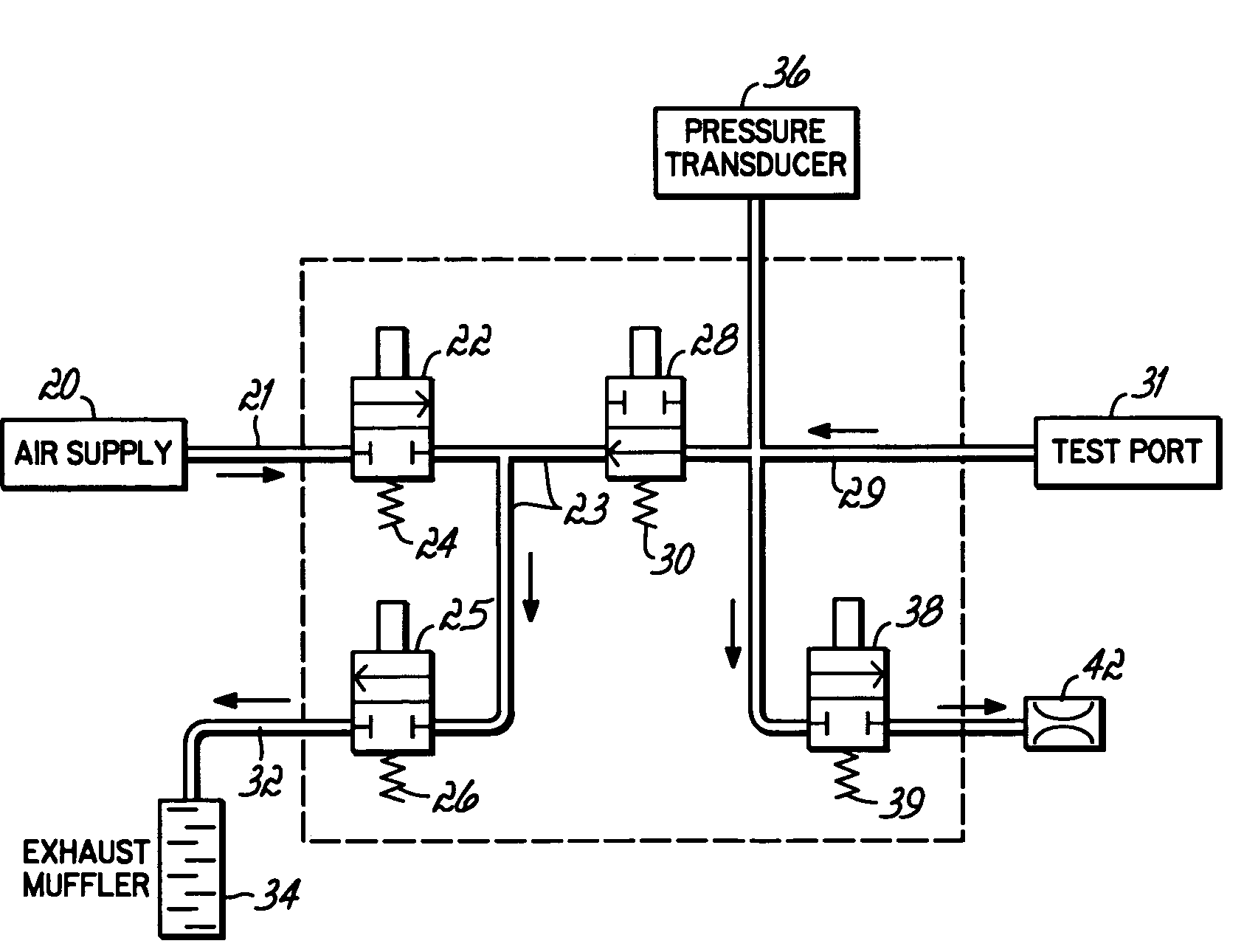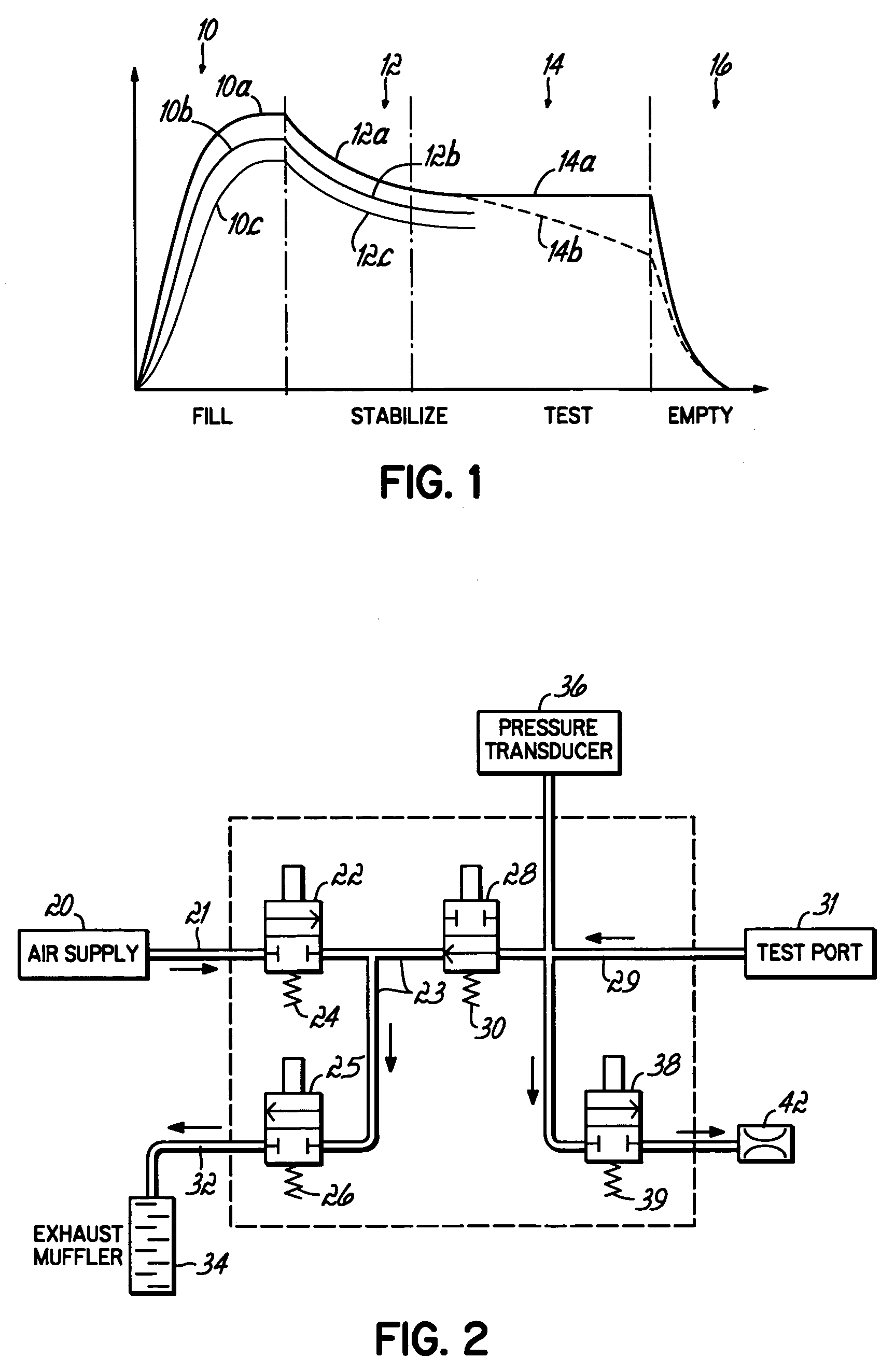Automated timer and setpoint selection for pneumatic test equipment
a pneumatic test and automatic timer technology, applied in the direction of measuring devices, instruments, structural/machine measurement, etc., can solve the problems of rapid testing compromise, reduced pressure within the unit after the unit, and difficulty in practical application
- Summary
- Abstract
- Description
- Claims
- Application Information
AI Technical Summary
Benefits of technology
Problems solved by technology
Method used
Image
Examples
Embodiment Construction
[0029]Referring now to FIG. 2, a testing platform for performing pneumatic testing of parts is illustrated. This testing platform includes an air supply 20 providing air pressurized to a pressure of, e.g., 60-130 pounds per square inch. This air supply is coupled to a fluid line 21 connected to a two-way normally closed valve 22. Normally closed valve 22, as illustrated, will normally isolate fluid line 21 from fluid line 23 unless a control signal is delivered to the valve 22 via connection 24.
[0030]Fluid line 23 connects pressurized air from valve 22 and supply 20 to normally closed two-way valve 25 and normally open two-way valve 28. Normally open valve 28 connects between fluid line 23 and fluid line 29 and permits free flow from fluid line 29 to fluid line 23 but will block flow from fluid line 23 to fluid line 29 unless actuated by a control signal delivered to input 30. The fluid line 29 is connected to the test port 31 to which the unit under test is attached.
[0031]To perfor...
PUM
 Login to View More
Login to View More Abstract
Description
Claims
Application Information
 Login to View More
Login to View More - R&D
- Intellectual Property
- Life Sciences
- Materials
- Tech Scout
- Unparalleled Data Quality
- Higher Quality Content
- 60% Fewer Hallucinations
Browse by: Latest US Patents, China's latest patents, Technical Efficacy Thesaurus, Application Domain, Technology Topic, Popular Technical Reports.
© 2025 PatSnap. All rights reserved.Legal|Privacy policy|Modern Slavery Act Transparency Statement|Sitemap|About US| Contact US: help@patsnap.com



